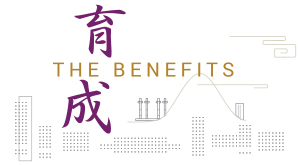Genomic Snapshots in Utero
Prof. Dennis Y.M. Lo, Li Ka Shing Professor of Medicine and Professor of Chemical Pathology at CUHK, got his first camera from his father and set up a dark room at home when he was an adolescent. He has since been fascinated with the snapshots that capture moments of truth by playing light and darkness or hues of colours. While many would share his interest in photography, few others can claim as trailblazing a status in the world of cutting-edge medical research.
A safer prenatal test
In 1997, Professor Lo made a splash by discovering that the DNA of an unborn fetus could be found in the blood plasma of its pregnant mother. He went on to develop a new method for the prenatal testing of Down syndrome which averted the risk of miscarriage inherent in traditional invasive methods. His pioneering work has made possible a new generation of non-invasive tests.
In 2010, he, in collaboration with Prof. Rossa Chiu and Prof. Allen Chan, made a breakthrough by showing that the entire fetal genome is represented in maternal plasma. The next step of devising a non-invasive fetal genome scan was challenging, as fetal DNA molecules, which account for only about 10% of the DNA in the maternal plasma, are highly fragmented. Constructing the fetus’s genetic profile from these fragments would be tantamount to assembling a million-piece jigsaw puzzle. Professor Lo said, “To make matters worse, these fetal DNA molecules in the mother’s blood plasma are drifting in an ocean of maternal DNA molecules. This is like adding in tens of millions of pieces from another jigsaw puzzle and then trying to re-assemble the first one.”
The pieces fall into place
To overcome this, the CUHK research team sequenced nearly four billion DNA fragments from a maternal blood sample, which was equivalent to some 65-fold coverage of the human genome. They then constructed separate genetic maps that the fetus had inherited from the father and from the mother. By combining the paternally-inherited and maternally-inherited genetic maps, CUHK researchers were able to arrive at a genomic map of the fetus. They then used this map to confirm that, in the test case in point, the fetus was a carrier of beta-thalassaemia from the father’s side, which should not cause any serious postnatal problems.
By carefully sequencing the maternal plasma DNA, Professor Lo’s team has been able to reveal the genome-wide genetic and mutational profile of the fetus. Their findings were published as the cover story in the prestigious interdisciplinary biomedical journal, Science Translational Medicine. The implication of this ground-breaking research is that by analysing a blood sample from the pregnant woman the entire genome of the fetus can be deduced and screened for many possible genetic disorders in one go.
A comprehensive screener for cancer
What Professor Lo is doing, in photo-technical terms, is to reveal the mystery of life in ever-increasing numbers of pixels which will enhance prevention and even treatment. He takes aim at the present for possible answers to the future. In this regard, he has recently shown a similar approach can be used for detecting virtually any type of cancer. Hence, the future for patients who would benefit from Professor Lo’s scientific innovations is indeed bright.
The Basics
The Benchmarks






